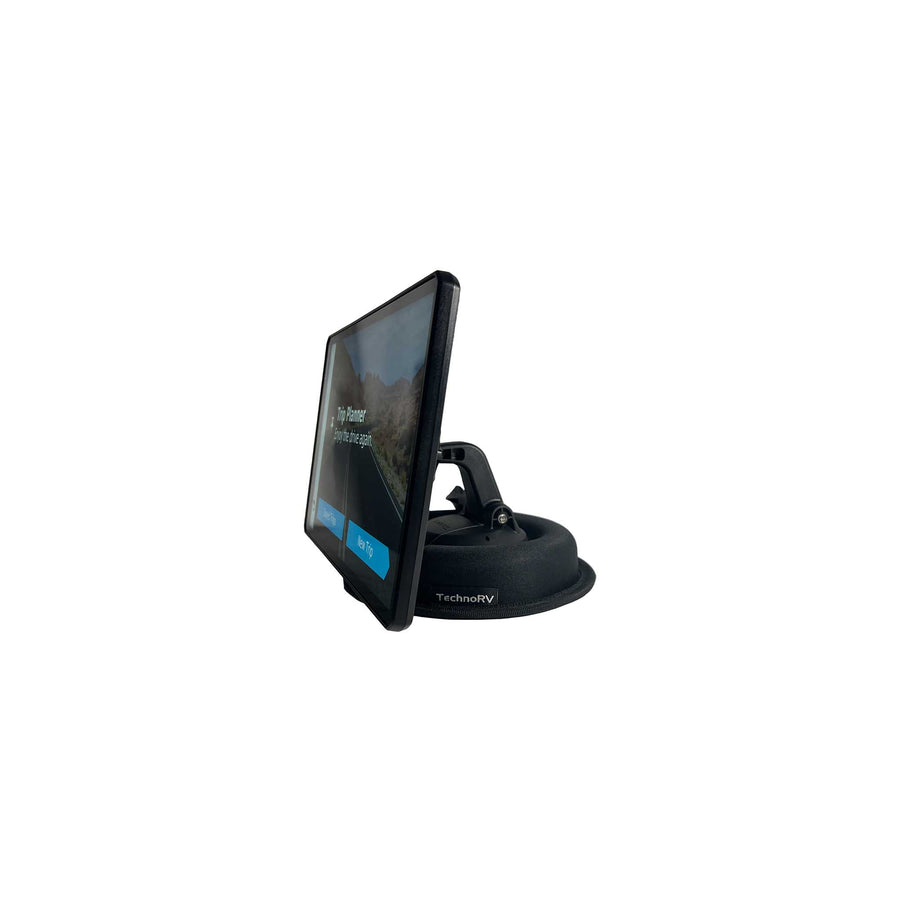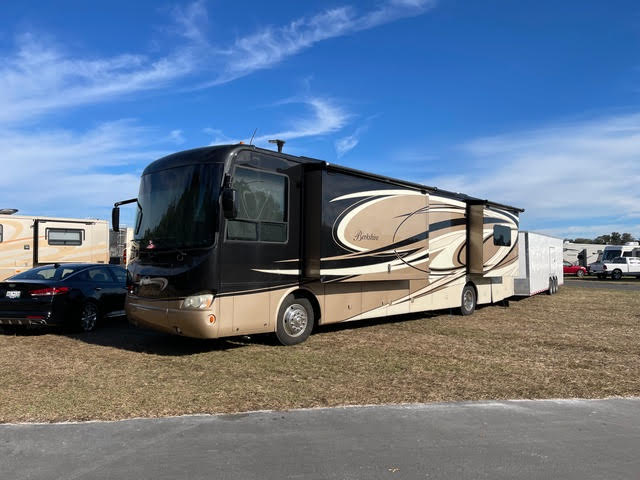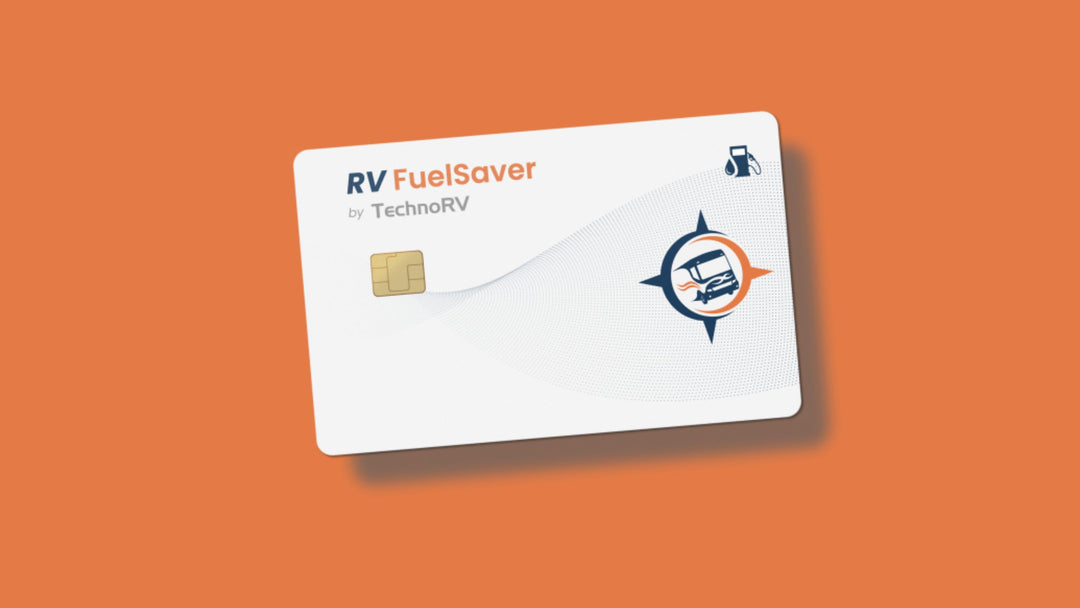The Truth About Tire Pressure
If you have done any highway driving during the summer, I'm sure you have seen "Road Gators" on the shoulder. Or, even worse, right in the middle of traffic. Road Gators are what truckers call debris from blown tires that can cause even more damage if you drive over them at high speed. Blown tires happen more frequently in summer months due to the increase in road temperatures, and if you have low pressure in your RV tires, your chance for a blowout increases even more.
If you do not routinely check your tire pressure, you may be surprised to know how much air a tire loses over time.
Why Tires Lose Air
Tires lose air pressure over time. This happens for 3 main reasons: osmosis, a valve stem leak, or a puncture.
Tires Lose Air Through Osmosis
First, osmosis. Manufacturing quality will affect how quickly this happens, but even the best tires out there will lose about 1-2 PSI per month by osmosis. Tires may look impenetrable, but air molecules do gradually make their way out. Of course, the design of a tire is meant to minimize loss of air. The first line of defense is the tire innerliner compound, a butyl-based rubber compound that is specifically designed to keep air in the tire and minimize osmosis.
Some tires have a heavier innerliner gauge than others. The heavier the innerliner gauge, the slower the tire will lose air—but, this comes at a price. Not only in dollars, but also in weight, since the heavier gauge tires weigh more. 1-2 PSI per month does not sound like much, but it can quickly add up. If you imagine a tire that is initially inflated to 100 PSI, it could end up at 85 PSI or even lower after a year without the proper care and maintenance.
Tires Lose Air Through the Valve Stem
The second major contributor is the air valve itself. Standard valve caps are small and easy to misplace. Over-tightening Schrader-type valve cores beyond the recommended 4 inch-pounds can also lead to leaks. This is why tire supply companies sell a pre-set torque tool. If you are going to be tightening your tire valve, make sure you have one.
Tires Lose Air Through Punctures
The last major cause of air loss in tires is a nail puncture around the tread. These leaks are relatively slow, since the nail is plugging the hole, but you could still be losing 1-2 PSI or more per day, instead of per month. Checking your tire pressure in the morning does not mean that you will be immune to nail punctures as you drive. You could end up with a severely underinflated tire before you know it.
Why Underinflated Tires are Dangerous
It might sound strange, but most tire blowouts actually happen from tires with low air pressure, not tires with high air pressure.
This is because when tires are underinflated, their rolling resistance increases significantly. If you imagine pedaling a bicycle with an almost flat tire, you will get the idea. There is a lot more rubber touching the road when a tire is low. An RV tire footprint gets 18% larger if the tire is underinflated by 30%. That is why a bike with a low or flat tire is so hard to pedal and steer! You also get a lot of heat that is generated from the friction of more rubber on the road as well as sidewall flexing. When air gets hot, it expands, and in a tire that has been weakened by underinflation, that air will find a place to go in a hurry through a blowout if you are not careful.
When you have more rolling resistance, you get lots of other problems too: lower fuel economy, uneven wear, and possible tread separation. Fuel prices are generally higher in the summer months when we all want to be out using our RVs, so even a 1-2% drop in fuel economy due to low air pressure can have a serious impact on your budget. You will also reduce the life of your tires, and replacing them sooner than expected makes a noticeable dent in your wallet, too.
The only time an underinflated tire is a good thing is when you need a lot of traction, since the load per inch is distributed over a greater area. One example is military vehicles that run in the hot, sandy desert. In this case, the tire pressure is lowered to increase traction. However, do not try this with your RV! You cannot drive at high speeds on underinflated tires, and you simply do not need this kind of traction on most roads. Some RVers will operate underinflated tires in hopes of a smoother ride, but the difference is very small and is not worth all of the negatives.
Proper Tire Maintenance
The best way to take care of your tires and prevent a blowout is to maintain the air pressure at its optimum PSI. One option is manual tire pressure checks with a calibrated pressure gauge, but the problem with this method is that you can check your tires in the morning and still have a problem on the road. In an RV, it is not always possible to know you have a problem, or even to feel a flat tire the way you would in a car. Major RV damage can occur if you drive on a flat tire, so it is important to be able to monitor your tire pressure at all times.
That is why we recommend a tire pressure monitoring system (or TPMS). These systems will not only make it easy to check the pressure in all of your RV (and even truck) tires; they will tell you the tire temperature, too. You can simply switch the TPMS on in the morning to see the pressure of all your tires before travel, and the system will continue to monitor as you drive. If any of your tires have high or low pressure, or a temperature that is out of the acceptable range, the monitor will beep to alert you so that you can pull over safely and hopefully save the tire. A TPMS is the best way to extend the life of your tires and protect your RV at the same time.







Leave a comment